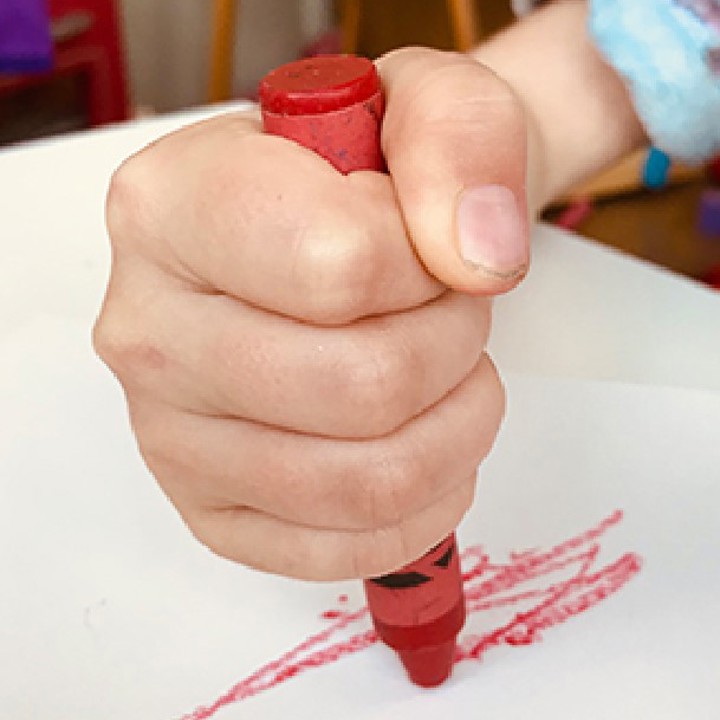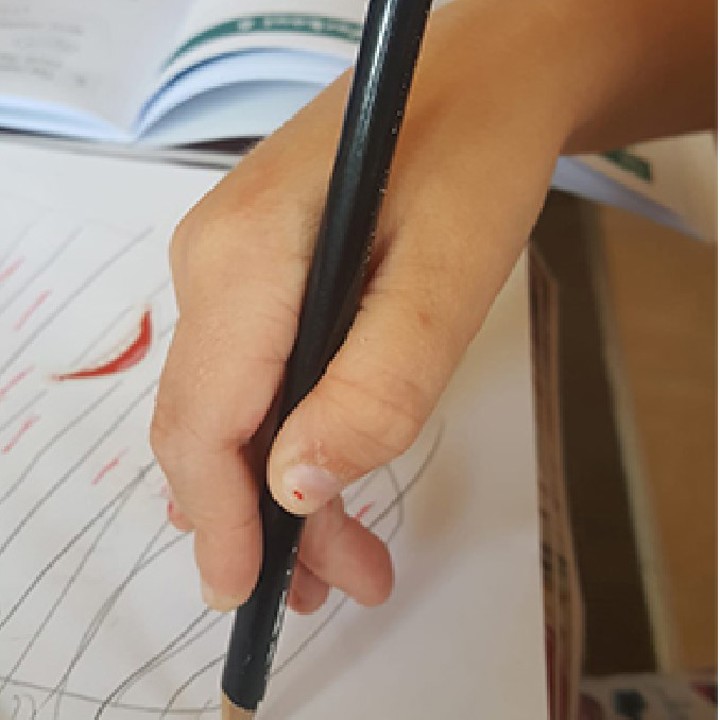Getting ready to write
- 1-5 Years
- 5-11 Years
- Child development and growing up

Making marks is foundation of being able to control a pencil, draw lines and shapes and then being able to draw. Mark making is considered part of ‘pre-writing’ which are the skills learned to enable children to hold pencils and pens and start to write letters and words.
Your child will learn faster when it’s a fun activity you do together. You will need to allow plenty of time for colouring, scribbling, and exploring what happens with movement and colour.
Explore the topics in this page:
Encouraging your child to make marks
Holding a crayon, pen or pencil
Encouraging your child to make marks
Learning to make marks is the first step towards being able to control a pencil, draw lines and shapes. Making marks on paper, drawing and writing gives your child the chance to express themselves.
There are lots of ways for your child to make marks! Your child doesn’t have to sit at a table with a pencil and paper to express themselves.
You can do the following activities at home:
- Making shapes in materials like rice or glitter
- Water and foam drawings
- Potato printing
- Using chalk on a blackboard or an outside wall
- Magnetic drawing boards or tablets
- Painting
-
- Using an easel
- Finger painting
- Pompom painting
- Ready-mixed children’s painting
- Watercolour painting
- Painting walls
- Using different pens and pencils
- Colouring over different textures with crayon or pencils
- Drawing on an iPad or tablet
Holding a crayon, pen or pencil
A good way to introduce your child to drawing is using short chunky crayons, pens, and pencils. The way children hold crayons, pens, and pencils will develop over time.
There are lots of stepping stones to holding a crayon, pen, or pencil:
- With both hands
- Grasping it in their fist (Palmar Grasp)
- Holding it in the palm of their hands with their hand facing down towards the paper (Digital Pronate Grasp)
- Holding it in their fingertips (Static Tripod)
- Holding it between their thumb and index finger, resting it against the rest of their fingers for stability
- Holding it between their thumb and index finger, resting it on their middle finger. The ring and little fingers curled in
Palmar grasp
Grasping it in their fist.

Static tripod grasp
Holding it using their thumb, index finger and middle finger. They are writing by moving their wrist or arm.

Digital pronate grasp
Holding it in the palm of their hand.

Dynamic tripod grasp
Holding it using their thumb, index finger and middle finger. They are writing by moving their fingers.

Find more information about skills for starting school below:
Drawing
Drawing is the next step in making marks. It is a more deliberate mark making process.
The stages of drawing development you might see in your child:
- Picks up a crayon and scribbles
- Picks up a crayon and makes lines and circular scribbles
- Copies (adult showing) a vertical line
- Copies (adult showing) a horizontal line
- Copies (adult showing) a circular action
- Starts and stops a vertical line between dots or on a ‘train track’
- Starts and stops a horizontal line between dots or on a ‘ladder’
- Places circles on a face for eyes and nose
- Colours in shapes trying to keep inside the lines.
Once your child can draw vertical lines, horizontal lines and circles they are then ready to try drawing diagonals and putting two lines together.
Drawing diagonal lines and shapes
Diagonal lines can be very challenging for children. They can require a lot of teaching and practice. It is much easier for your child to trace a diagonal line than to draw it by themselves. Your child will likely be able to trace a diagonal line long before they can draw one.
Tracing and drawing are different skills. Tracing shapes and lines will help your child learn about the shapes. Your child will only learn how to draw shapes and diagonal lines when they draw without tracing.
Left-handed children
By 6 years old, children will show a preference for a specific hand when they do tasks. You may notice that they are:
- using a spoon in their left hand and use their right hand to hold the bowl
- reaching out for toys using their left hand
- catching or stopping balls using their left hand
- drawing or using scissors using their left hand
If your child prefers to use their left hand, do not try to make them use their right hand. There is nothing wrong with being left-handed.
Left-handed children can struggle when learning to write. They will often smudge their drawings or writing with their hand.
You can help your child whilst they are learning to make marks by tilting the paper to the right. You can also use a slanted surface like a folder or sloping desk topper to angle the paper/surface.
Last reviewed: 1 November, 2024
